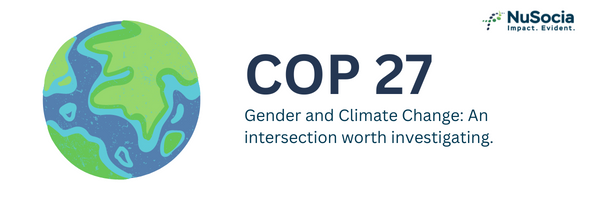By NuSocia Labs
Introduction: The AI Revolution in the Non-Profit Sector
Artificial Intelligence (AI) has emerged as a transformative force across industries, and the non-profit sector is no exception. As organizations dedicated to social good, nonprofits face unique challenges and opportunities when it comes to adopting AI technologies. This comprehensive guide explores the framework for assessing non-profit AI maturity, delving into the five stages of AI adoption and the hurdles that organizations must overcome along the way.
In recent years, we’ve witnessed a surge in AI applications within the nonprofit sector, from predictive analytics for fundraising to chatbots for donor engagement. However, the journey to AI maturity is not without its obstacles. Nonprofits must navigate limited resources, data privacy concerns, and the need for specialized skills while staying true to their mission-driven focus.
To help organizations chart their course through this complex landscape, we’ll examine a five-stage framework for assessing non-profit AI maturity. This framework provides a roadmap for organizations to evaluate their current state of AI adoption and plan for future growth. By understanding where they stand in this journey, nonprofits can make informed decisions about their AI strategies and investments.
The Challenges of AI Adoption in Non-Profits
Before diving into the framework, it’s crucial to understand the unique challenges that nonprofits face when adopting AI technologies –
1. Resource Constraints: Non-profits often operate with limited budgets and lean teams. Implementing AI solutions can be costly, requiring investments in technology infrastructure, data management systems, and skilled personnel. These financial constraints can make it difficult for non-profits to allocate resources to AI initiatives, especially when competing with more immediate needs related to their core mission.
2. Data Quality and Availability: AI systems rely on high-quality, comprehensive data to function effectively. Nonprofits may struggle with data collection, storage, and management due to outdated systems or lack of standardized processes. Additionally, sensitive information about beneficiaries or donors requires careful handling to ensure privacy and compliance with regulations like GDPR or CCPA.
3. Ethical Considerations: Nonprofits must be particularly mindful of the ethical implications of AI use. Issues such as algorithmic bias, transparency, and the potential for AI to inadvertently perpetuate social inequalities are of paramount concern. Balancing the potential benefits of AI with these ethical considerations requires careful thought and planning.
4. Skill Gap: Many nonprofits lack in-house expertise in AI and data science. Attracting and retaining talent with these specialized skills can be challenging, especially when competing with higher-paying private sector jobs. This skill gap can hinder the effective implementation and management of AI projects.
5. Resistance to Change: Like any organization, nonprofits may face internal resistance to adopting new technologies. Staff members may be hesitant to embrace AI due to fears of job displacement or skepticism about its effectiveness in addressing complex social issues.
6. Integration with Existing Systems: Non-profits often rely on a patchwork of legacy systems and databases. Integrating AI solutions with these existing technologies can be technically challenging and time-consuming.
7. Measuring Impact: Quantifying the impact of AI initiatives can be difficult, especially when dealing with complex social issues. Nonprofits need to develop new metrics and evaluation frameworks to assess the effectiveness of their AI investments.
Understanding these challenges is crucial for non-profits as they embark on their AI journey. With this context in mind, let’s explore the five-stage framework for assessing non-profit AI maturity.
The Five-Stage Framework for Non-Profit AI Maturity
Stage 1: AI Skepticism
At this initial stage, nonprofits are characterized by a cautious or even resistant attitude towards AI adoption. Organizations in this phase may view AI as a trendy buzzword or a technology that’s not relevant to their mission-driven work.
Key characteristics of this stage include:
- Limited awareness of AI’s potential applications in the non-profit sector
- Skepticism about the value of AI in addressing social issues
- Concerns about the ethical implications of AI use
- Lack of internal discussions or planning related to AI adoption
Nonprofits in this stage may be influenced by negative media coverage of AI or misconceptions about its capabilities. They might also be focused on more immediate operational concerns, viewing AI as a distant or irrelevant technology.
To move beyond this stage, organizations need to:
- Educate leadership and staff about AI basics and its potential applications in the non-profit sector
- Identify peer organizations that have successfully implemented AI solutions
- Attend conferences or workshops focused on technology in the social sector
- Encourage open discussions about the potential benefits and risks of AI adoption
Stage 2: AI Activation
As non-profits move into the AI Activation stage, they begin to recognize the potential of AI to enhance their operations and impact. While still in the early phases of adoption, organizations at this stage are actively exploring AI possibilities and laying the groundwork for future implementations.
Key characteristics of this stage include:
- Increased awareness and interest in AI applications for nonprofits
- Initial discussions and planning around potential AI projects
- Preliminary assessments of data readiness and infrastructure needs
- Identification of key stakeholders and potential champions for AI initiatives
At this stage, nonprofits may start to:
- Form AI working groups or task forces to explore potential use cases
- Conduct internal audits of existing data and technology infrastructure
- Allocate budget for AI education and training for staff members
- Explore partnerships with tech companies or academic institutions for AI expertise
To progress from this stage, organizations should focus on:
- Developing a clear AI strategy aligned with their mission and goals
- Identifying low-hanging fruit for initial AI projects
- Addressing data quality and management issues
- Building internal capacity through training and hiring
Stage 3: AI Experimentation
The AI Experimentation stage marks the beginning of hands-on AI implementation within the organization. Non-profits at this stage are actively piloting AI projects and learning from their experiences.
Key characteristics of this stage include:
- Launch of one or more pilot AI projects
- Collection and analysis of data to assess AI project outcomes
- Growing internal expertise in AI implementation and management
- Increased engagement with AI vendors and service providers
During this stage, non-profits might:
- Implement a chatbot for donor inquiries or beneficiary support
- Use predictive analytics for fundraising campaign optimization
- Experiment with natural language processing for grant application review
- Develop AI-powered tools for program evaluation and impact assessment
To successfully navigate this stage, organizations should:
- Establish clear metrics for evaluating AI pilot projects
- Foster a culture of experimentation and learning from failures
- Develop protocols for ethical AI use and data governance
- Engage stakeholders (including beneficiaries) in the AI development process
Stage 4: AI Scaling
As non-profits move into the AI Scaling stage, they begin to expand their AI initiatives beyond initial pilots. Organizations at this stage are integrating AI more deeply into their operations and scaling successful projects across different programs or departments.
Key characteristics of this stage include:
- Multiple AI projects running concurrently across the organization
- Integration of AI into core operations and decision-making processes
- Dedicated AI team or department within the organization
- Increased investment in AI infrastructure and talent
During this stage, non-profits might:
- Expand successful AI pilots to cover broader geographic areas or program areas
- Develop AI-powered dashboards for real-time impact monitoring
- Implement AI-driven personalization for donor communications and engagement
- Use machine learning for complex resource allocation and program planning
To successfully scale AI initiatives, organizations should focus on:
- Developing standardized processes for AI project development and implementation
- Ensuring robust data governance and privacy protection measures
- Continuously monitoring and addressing ethical considerations as AI use expands
- Fostering cross-departmental collaboration and knowledge sharing
Stage 5: AI Maturity
The final stage, AI Maturity, represents a state where AI is fully integrated into the non-profit’s operations, strategy, and culture. Organizations at this stage leverage AI as a core component of their work, driving innovation and impact.
Key characteristics of this stage include:
- AI is embedded in most aspects of the organization’s operations
- Continuous innovation and experimentation with cutting-edge AI technologies
- Strong AI governance frameworks and ethical guidelines
- The organization is recognized as a leader in AI adoption within the nonprofit sector
At this stage, non-profits might:
- Use advanced AI systems for scenario planning and long-term strategy development
- Implement AI-driven impact measurement frameworks that provide real-time insights
- Develop novel AI applications tailored to specific social challenges
- Collaborate with other organizations to create AI-powered solutions for sector-wide issues
To maintain and advance their AI maturity, organizations should:
- Continuously assess and update their AI strategy in line with technological advancements
- Invest in ongoing AI education and training for all staff members
- Engage in thought leadership and knowledge sharing within the nonprofit sector
- Regularly audit AI systems for bias, fairness, and alignment with organizational values
Charting a Nonprofit’s AI Journey
The five-stage framework for assessing non-profit AI maturity provides a roadmap for organizations to evaluate their current state and plan for future growth. By understanding where they stand in this journey, nonprofits can make informed decisions about their AI strategies and investments.
It’s important to note that progress through these stages is not always linear. Organizations may find themselves at different stages for different aspects of their operations, or they may need to revisit earlier stages as they encounter new challenges or technologies.
As non-profits navigate this AI frontier, they must remain true to their core missions and values. The goal of AI adoption should always be to enhance and amplify the organization’s impact, not to replace the human touch that is so crucial in addressing complex social issues.
By thoughtfully embracing AI technologies, nonprofits can unlock new possibilities for innovation, efficiency and impact. Organizations must consider the following questions as they move forward –
- Where do they currently stand in this framework?
- What are the most pressing challenges they face in advancing their AI maturity?
- How can they align their AI strategy with the organization’s mission and values?
- What resources or partnerships would be needed to progress to the next stage?
By regularly assessing their AI maturity and addressing these questions, nonprofits can ensure that they are well-positioned to harness the power of AI for social good in the years to come.




